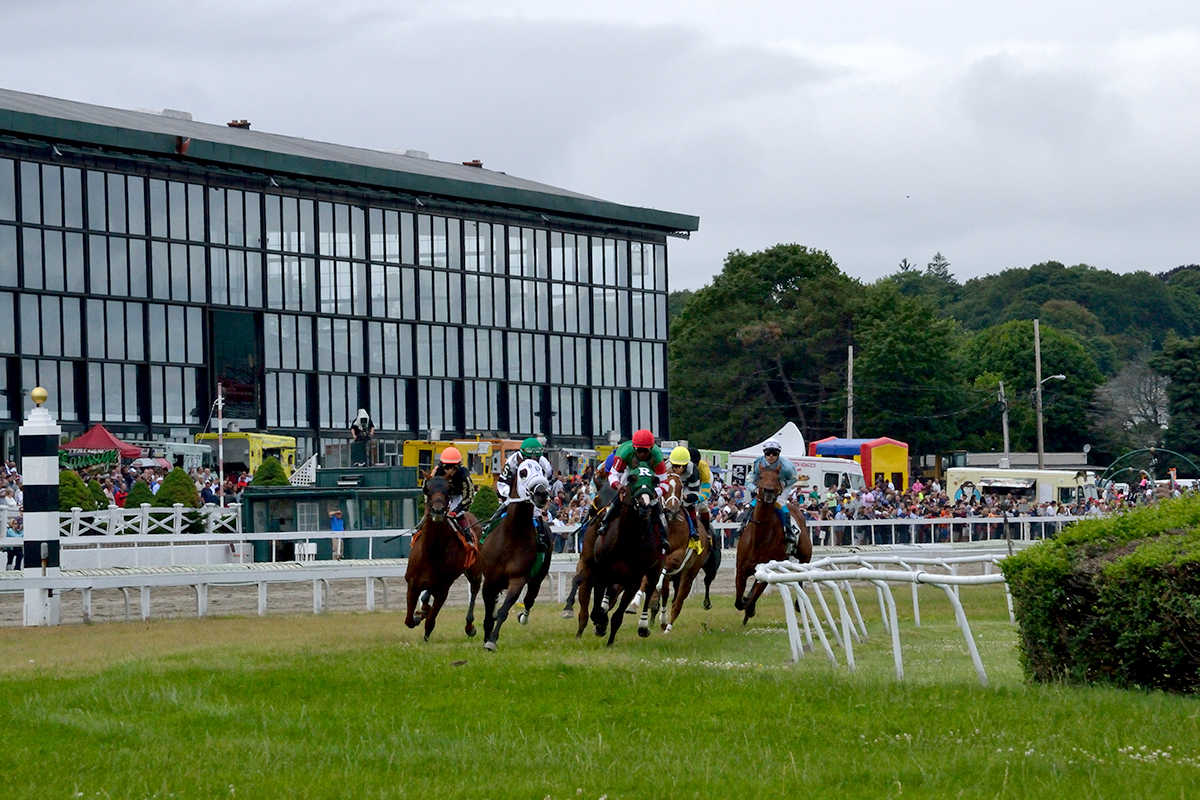
Rounding the clubhouse turn in race eight on Saturday.
It was a weekend of familiar names and familiar faces (and a familiar voice in the announcer’s booth), but you couldn’t call the first two days of racing this year at Suffolk Downs dull — not with three state-bred stakes and a bridge jumper and a horse running off (just to start).
“It feels so good to be back and see how excited the fans are. After all, no matter where you go, your roots are your roots,” Tammi Piermarini told the Daily Item. The jockey was at Suffolk with a broken nose — which she told the Boston Globe she set herself after an accident at Finger Lakes — this weekend.
Piermarini began Saturday well, with a 15 3/4 length win aboard 1-9 favorite Dr. Blarney in the day’s first flat race, the African Prince Stakes for Mass-breds. The track’s four-time leading rider got her second win of the weekend in Sunday’s fourth race with Cotton Pickin. Later that afternoon, she rode Miss Wilby in the Isadorable Stakes. More than $30,000 in a $34,000 show pool was wagered on the 4-year-old filly, a winner of three state-bred stakes at Suffolk in 2015 and a stakes winner at Gulfstream earlier this year. She and Piermarini finished fourth, triggering show payouts of $8.80 on back-to-back Isadorable winner Navy Nurse, $21.20 on runner-up Chasing Blue, and a whopping $84.20 on third-place finisher Lucky Sociano.
Sunday’s other Mass-bred stakes, the Rise Jim, went to Silk Spinner, who rushed up late to catch 2015 Rise Jim winner Worth the Worry by a neck. The finish wasn’t all that was dramatic about the race — rider Dyn Panell’s mount Im Kwik was a late scratch after the 6-year-old gelding ran off in the post parade, circling the track twice before tiring. “Pull the chute,” someone in the crowd shouted at the jockey as he tried to pull up his speeding horse.
The jockey who had the best weekend was Pedro Cotto, winner of five races, including Saturday’s feature, the Jill Jellison Memorial Dash. Forest Funds, entered off a second in a stakes at Monmouth Park last month, opened up in the stretch to win the turf sprint by 1 3/4 lengths over Harp N Halo, paying $9. Favorite Ruby Notion, making her first start since a 13th-place finish in the Breeders’ Cup Juvenile Fillies Turf last October, was fourth.
There was a touching scene in the winner’s circle after the race, as trainer Bobby Raymond presented the Jellison Memorial trophy to Cotto and winning trainer Jorge Navarro, surrounded by several members of Suffolk’s jockey colony. The race was named to honor the late rider, at one time the leading active female jockey, who got her start in New England with Raymond in the 1980s and died of breast cancer in July 2015. Everyone agreed, Jellison would have approved of Cotto and and Forest Funds’ run — coming from off the pace with a late kick was how she liked to win.
Photos from the weekend:

The field for the first race on Saturday, a 2 1/16 mile maiden hurdle, passes through the stretch for the first time. Silver Lime, a 7-year-old gelding, suffered a catastrophic right hind leg fracture going over the ninth, and final, jump. Reporter, ridden by Kieran Norris, won the race.

Maggiesfreuddnslip in the paddock before Saturday’s feature race, the Jill Jellison Memorial Dash. The 6-year-old mare finished third in the turf sprint.
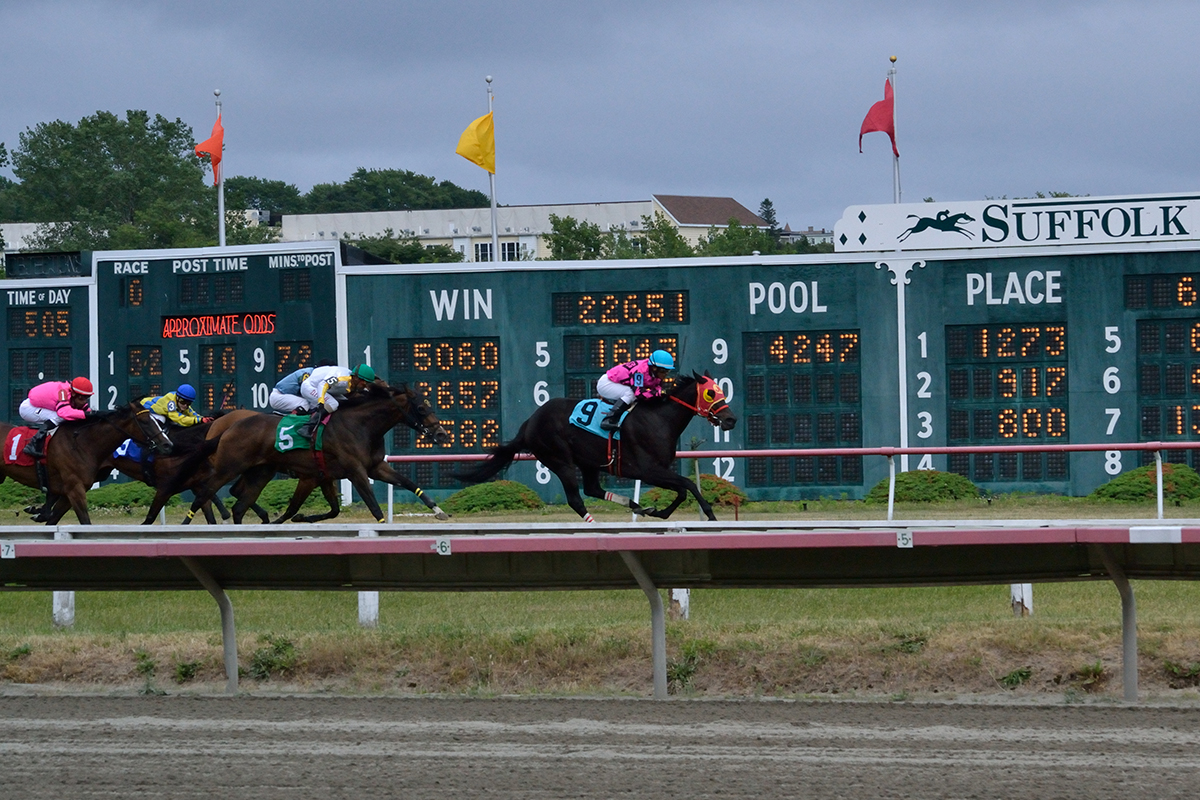
Forest Funds and jockey Pedro Cotto win the Jill Jellison Memorial Dash.
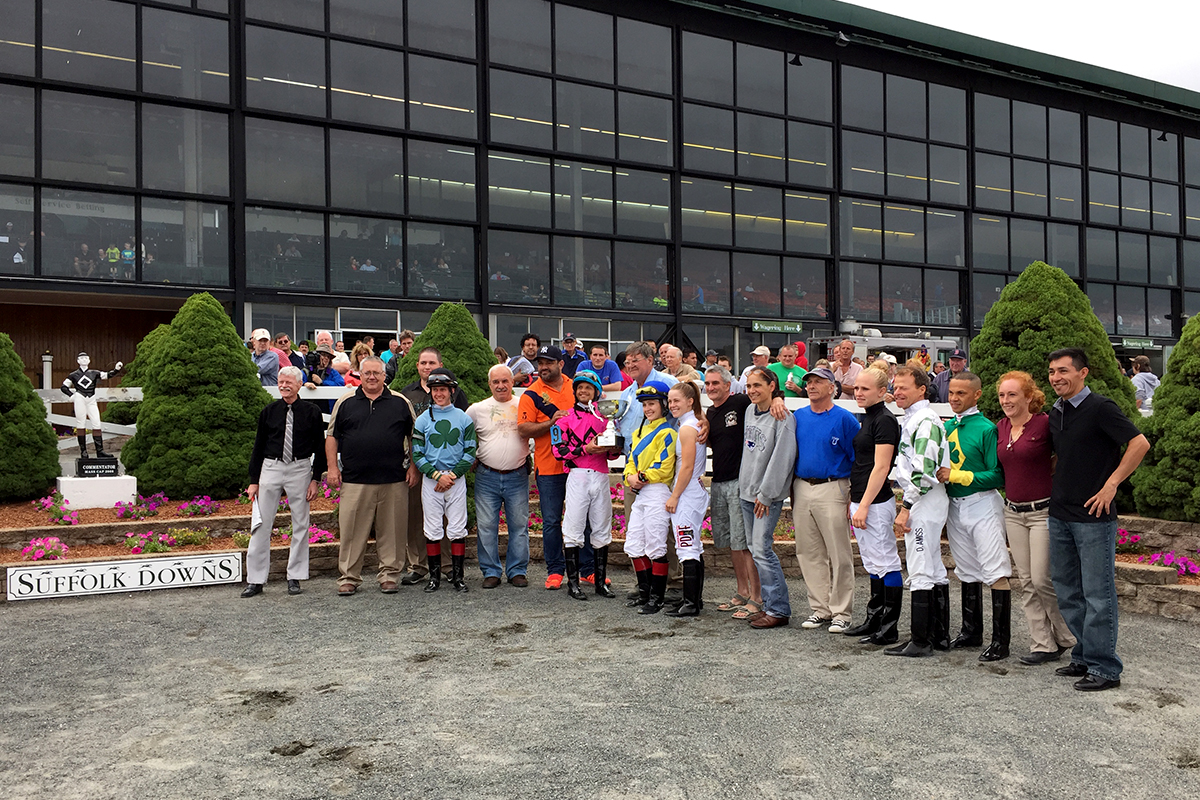
Trainer Bobby Raymond presents the trophy for the Jill Jellison Memorial Dash.

Piermarini had trouble getting Take It Inside to leave the paddock before Sunday’s fifth. She and the outrider ended up backing the mare out to the track after Take It Inside refused to otherwise walk down the ramp.
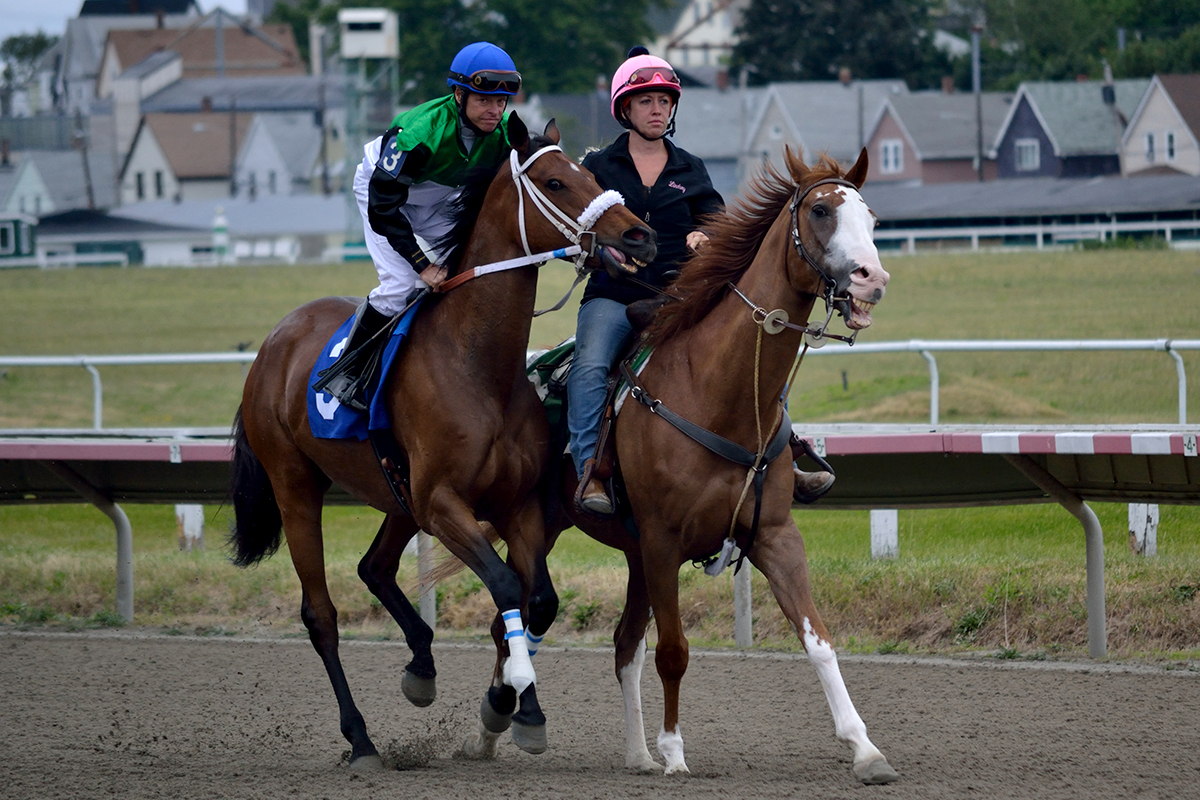
Navy Nurse and rider David Amiss on track for the Isadorable. The 2015 winner came back to win again this year, paying $8.60 as the second favorite.

Chris DeCarlo and Dancetrack, trained by Bill Mott and owned by Juddmonte, gallop back after winning the ninth race at Suffolk Downs on Sunday.
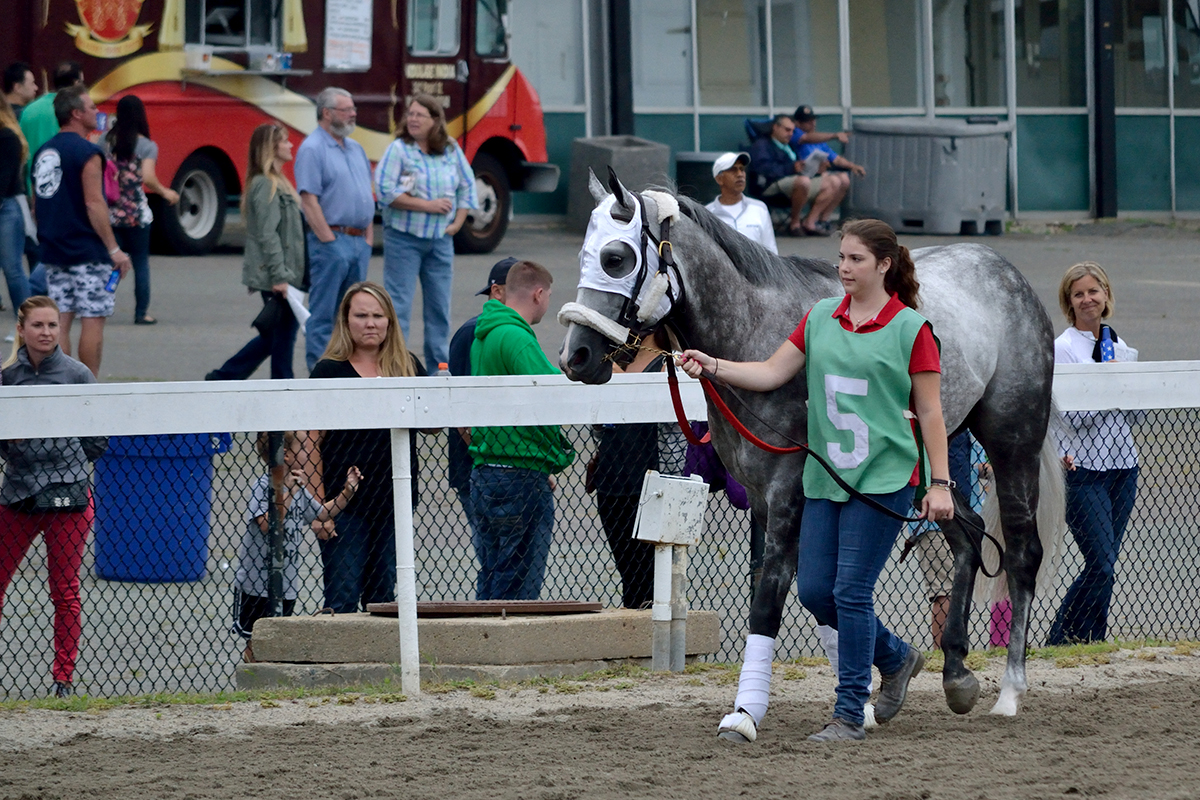
Simply Mas walks over for the Rise Jim Stakes on Sunday.
Posted by JC in Racing on 07/12/2016 @ 8:20 pm / Tagged African Prince Stakes, Isadorable Stakes, Jill Jellison Memorial Dash, Jockeys, Massachusetts, Pedro Cotto, Rise Jim Stakes, Suffolk Downs, Tammi Piermarini / Follow @railbird on Twitter

Miss Wilby and rider Tammi Piermarini after winning the Louise Kimball Stakes at Suffolk Downs on October 3, 2015.
Entries are up for July 9 and 10 at Suffolk Downs. The first weekend of three scheduled for racing this year drew 192 starters for 22 races — including two steeplechase and three state-bred stakes — attracting a mix of horses who raced at the track in 2014-2015, Mass-breds, and out-of-state shippers from big name barns. Take note, horseplayers: Takeout is 15% across the board.
Saturday’s feature, the Jill Jellison Memorial Dash Stakes, honors the late jockey, a pioneering female rider prominent in the Suffolk colony. The $75,000 five-furlong turf sprint drew a field of 10, including Ruby Notion, a 3-year-old filly trained by Wesley Ward, making her first start since finishing 13th in the Breeders’ Cup Juvenile Fillies Turf at Keeneland on October 30, and the Steve Asmussen-trained Lindisfarne, winless this year, but third to Queen Mary Stakes winner (and Nunthorpe runner-up) Acapulco in her last start, the Unbridled Sidney Stakes at Churchill Downs on May 14.
The first Mass-bred stakes of the weekend, the African Prince, follows the two steeplechase events that open Saturday’s card. In a short field of six, Dr. Blarney — coupled with Dr. Ruthless, both trained by Thomas McCooey — looks the obvious choice coming off an 8 1/2 length win in a Mass-bred allowance at Finger Lakes on June 11. In that start, the 3-year-old Dublin gelding defeated the 2015 Rise Jim Stakes winner Worth the Worry, who returns to Suffolk Downs to defend his victory on Sunday.
Also of interest on Saturday is Street Strut, a 3-year-old half-sister to graded stakes winner America by Street Cry. Trainer Bill Mott sends the first-time starter for race five, a maiden special weight turf route.
Two Mass-bred stakes highlight the Sunday card. Miss Wilby, winner of three state-bred stakes at Suffolk Downs in 2015, returns in the Isadorable Stakes (race eight) for trainer Marcus Vitali and is reunited with rider Tammi Piermarini. The Rise Jim Stakes (race 10) drew not only last year’s winner Worth the Worry, but 2014 winner and 2015 third-place finisher Victor Laszlo.
Posted by JC in Racing on 07/06/2016 @ 12:18 pm / Tagged Jill Jellison Memorial Dash, Mass-Breds, Massachusetts, Miss Wilby, Suffolk Downs / Follow @railbird on Twitter

Construction began at Brockton Fair several weeks ago to restore the racetrack for a planned Thoroughbred racing meet there this year, the first since 2001. Extensive work is required — it includes rebuilding the track surface and installing a new rail — and days for the meet have yet to be set. What was projected in May as a July 2 start was bumped back to mid-July and now, late July, while a request for up to $150,000 a day in purse money from the Race Horse Development Fund was dropped from the Massachusetts Gaming Commission’s June 23 meeting, to be rescheduled on a date to be determined.
“I couldn’t get it all together in time. There was just so much crammed in,” Chris Carney, whose family owns the fair property, told Lynne Snierson:
“I’m still working on the track, doing the rail, and taking care of a lot of other things.”
Carney said he plans to go back to the MGC in the middle of July in the hope of starting the meet July 30, but will have a better idea of how many race-ready horses remain in the area after Suffolk Downs starts the first of its one weekend per month, six-day 2016 meet the weekend of July 9-10. Suffolk will not race again until the weekend of Aug. 6-7.
“This is a minor setback,” Carney said. “If the rail from before hadn’t been stolen and I had a safety rail in place, I wouldn’t have a problem now. I have barns already set up for 150 horses and I’m working on the other barns. It’s just a matter of time.”
According to a Massachusetts Thoroughbred Horsemen Association Facebook post from June 24, the track will open for training when the new rail is up:
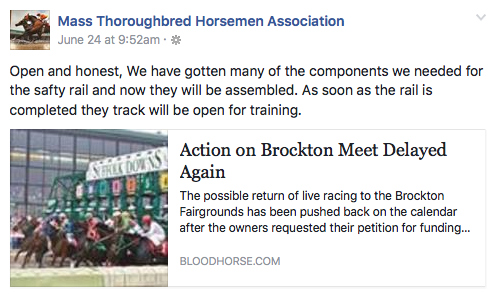
Brockton is a five furlong track, wide enough for a maximum of eight horses in each race. Stall applications are open, via the MTHA’s website. A condition book — like the racing calendar — has not been released.
I visited the grounds on July 3 to see the track restoration in progress.
Photo of the grandstand from the first turn:
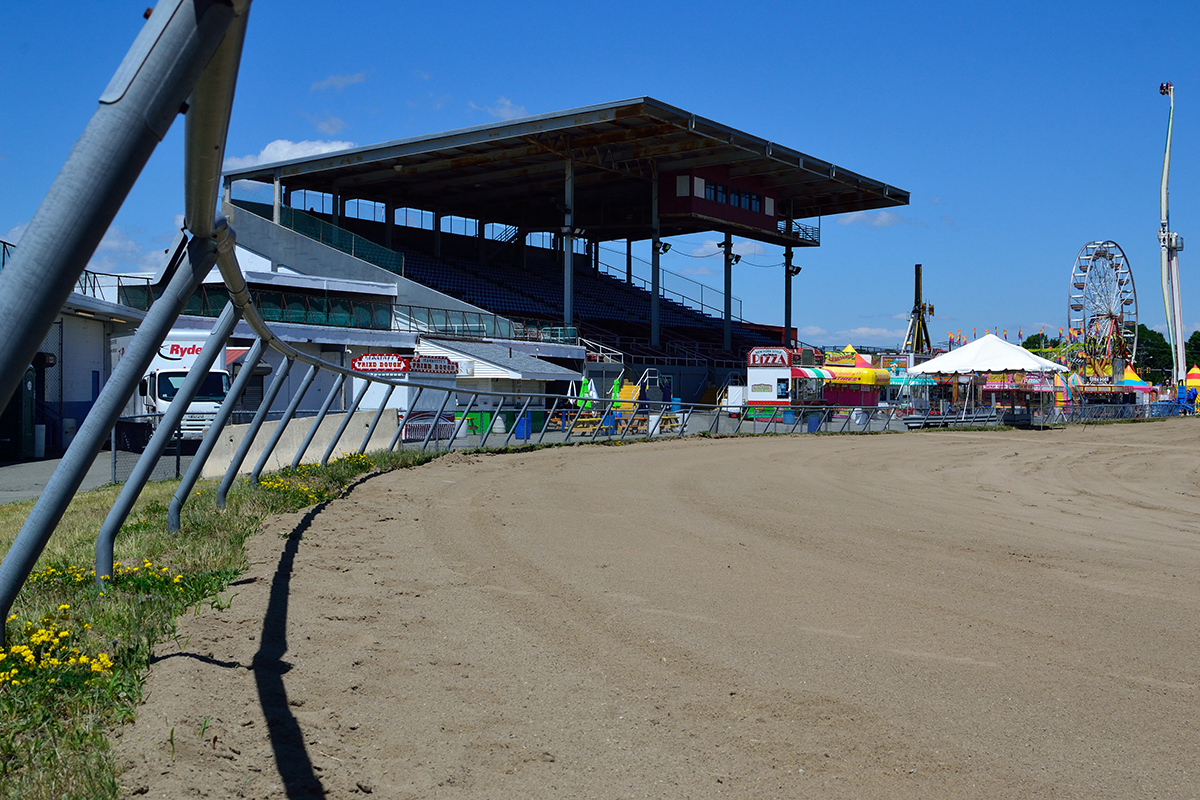
(Flashback: Horses racing on the clubhouse turn in 2001.)
View from the turn onto the backstretch:
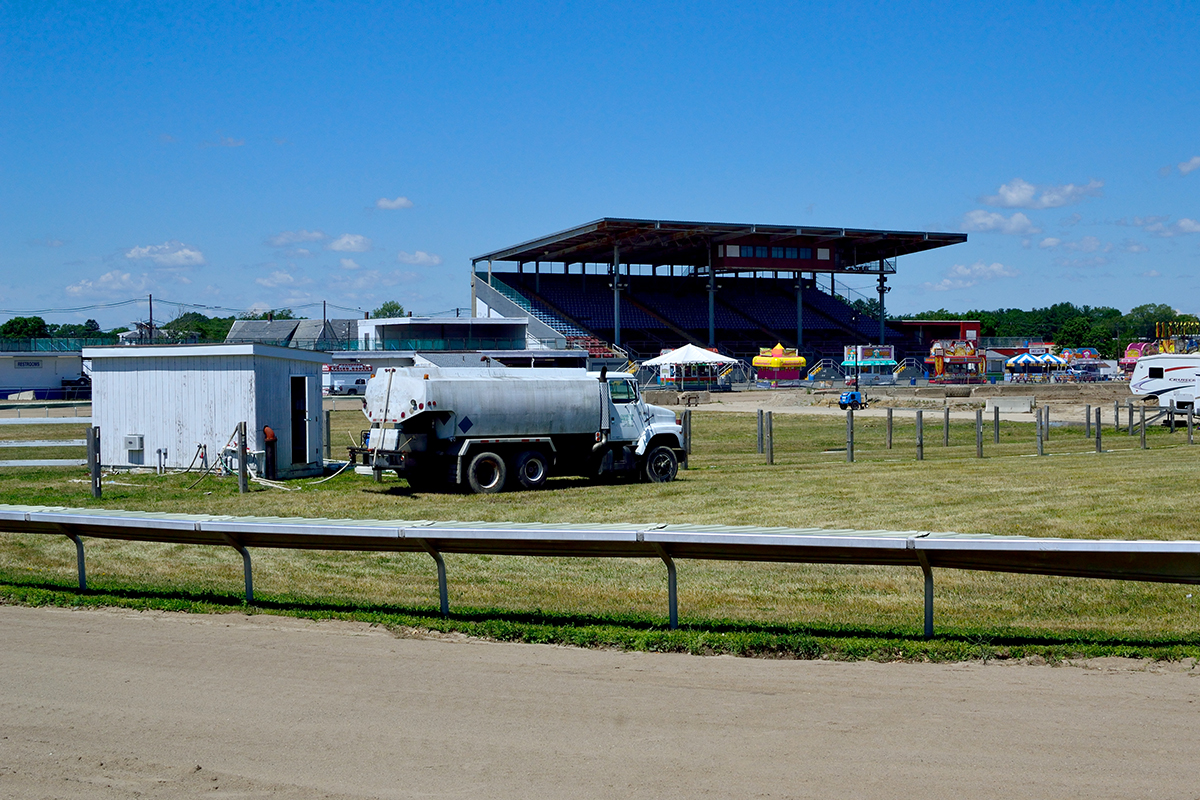
And the view down the backstretch:

You can see that much of both rails are in place, with some bits to fix:
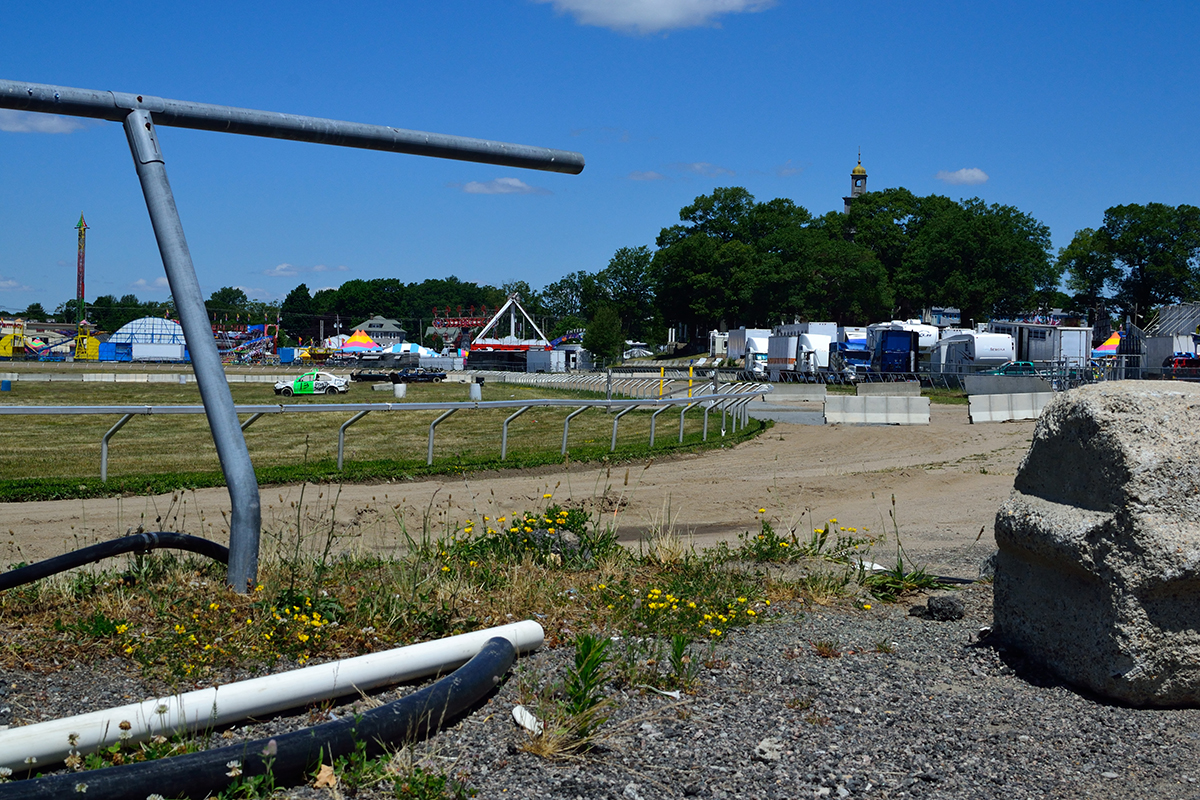
The paddock, looking toward the barns:

Piles of wood in place for the barn refurbishment that’s underway:
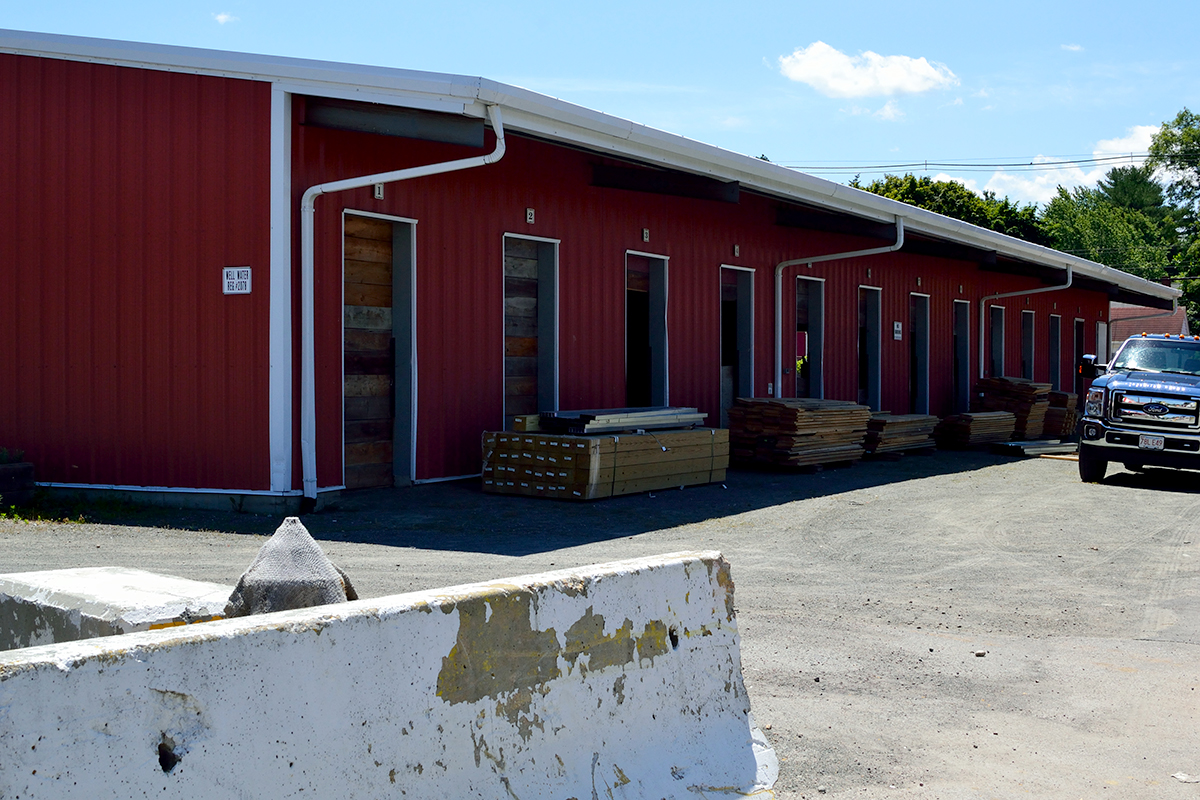
Posted by JC in Racing on 07/04/2016 @ 2:25 pm / Tagged Brockton Fair, Massachusetts, MTHA, Racetracks / Follow @railbird on Twitter
























